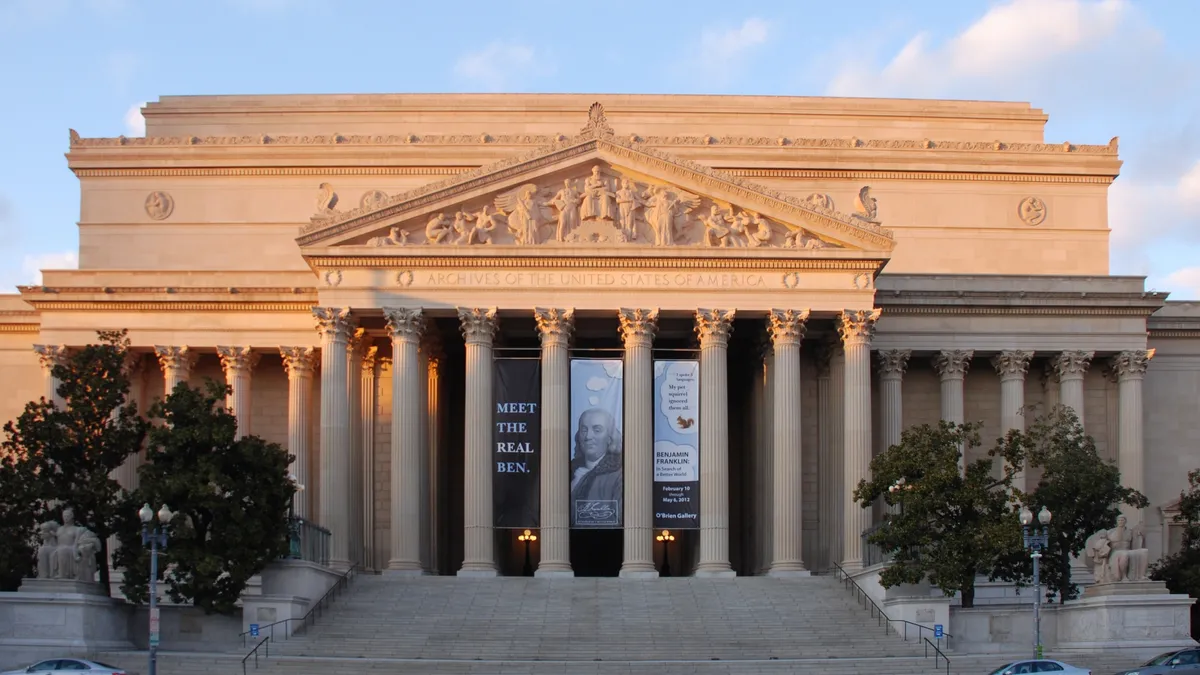Dive Brief:
- Ameresco has begun construction on a $33 million energy savings performance contract at the U.S. National Archives and Records Administration’s sites in College Park, Maryland, and Washington, D.C.
- The project aims to modernize the buildings’ infrastructure to reduce fossil fuel use 72%, electricity 28% and utility water 48%, resulting in annual savings of about $2 million, according to a May 28 news release.
- “The new equipment that Ameresco is deploying on this project will significantly enhance NARA’s operational efficiency,” Greg Caplan, vice president of federal business development at Ameresco, said in an interview. The new HVAC control systems will be “far more user-friendly,” he said.
Dive Insight:
The modernization project is the latest in a a 20-year collaboration between Ameresco and NARA, per the release.
Planned improvements include building automation system modernization, heating and cooling system optimization, building transformer replacements, LED lighting, building envelope improvements, piping insulation and utility water reduction measures to bring NARA’s facilities closer to net-zero emissions in line with executive order 14057, Ameresco said. The Biden administration executive order, signed in December 2021, requires federal agencies to achieve 100% carbon-free electricity by 2030, 100% zero-emission vehicle acquisition by 2035, net-zero building emissions by 2045 and a 65% reduction in scope 1 and scope 2 greenhouse gas emissions compared with 2008 levels by 2030, according to the U.S. Environmental Protection Agency.
The ESPC model can provide financial planning and sustainability benefits for organizations like NARA by addressing “capital improvement needs that otherwise remain unfunded,” Caplan said.
Ameresco developed this project without requiring any capital outlay, Nicole Bulgarino, executive vice president and general manager at Ameresco, said in a statement.
A grant from the U.S. Department of Energy’s Assisting Federal Facilities with Energy Conservation Technologies program is supporting additional energy-efficient infrastructure such as more solar rooftop photovoltaic systems, a new chiller and electric vehicle charging for the sites.
“Even when powered by on-site solar PV, EV chargers do not generate enough savings to pay for themselves,” Caplan said. Against that backdrop, integrating rooftop photovoltaic arrays and EV charging stations can enable building operators to secure budgeted funds, utility incentives and grant money that can be used as a down payment, helping to balance initial investments and long-term cost savings, he explained.















